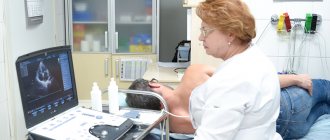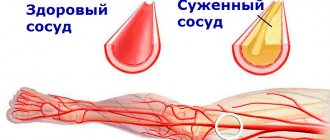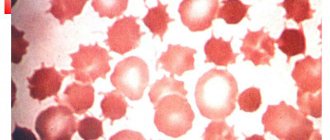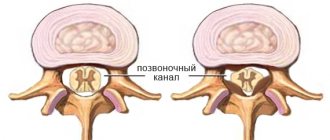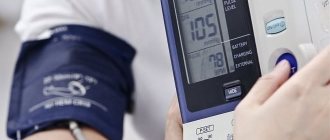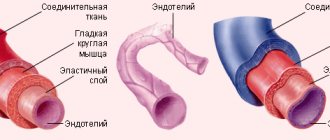A cup of coffee is an essential morning ritual for most people. It has a charming taste and divine aroma. Milk and cream, sugar are added to it, or the aromatic black drink is simply drunk. It invigorates, helps you finally wake up, and “evaporates” negative thoughts.
There is a lot of evidence revealing the negative effects of coffee on the human body, but recent research contradicts them and suggests its beneficial effects. Science does not stand still; scientists are constantly discovering new beneficial properties of coffee.
But people suffering from high blood pressure have long learned the truism that coffee is harmful for hypertension. Is it so?
Properties of coffee
There has been debate for many years regarding the effects of coffee on human health. Recent studies have shown that this is a very healthy drink, it:
- Calms asthma and allergy attacks;
- Prevents caries;
- Activates fat burning in the body;
- Replenishes potassium deficiency;
- Improves cardiovascular functions.
Its main biologically active component is the organic alkaloid caffeine. Due to the caffeine content, after consuming the drink, the reaction speed increases, concentration improves, and associative thinking is stimulated. Coffee is a powerful source of antioxidants and contains vitamin P, which strengthens blood vessels.
Some researchers suggest that coffee increases the concentration of the hormone serotonin in the human body, which is responsible for feelings of happiness. Therefore, people who regularly drink this drink feel confident, have increased self-esteem and do not experience unreasonable fears.
Instead of sweets - dried fruit compote
Sweet foods are harmful to hypertension. They can be safely replaced with fruit.
Only partly true. Fruits are a good choice, but not more than 200 g at a time. Sour and sweet apples are absolutely equal in calorie content, the former only have more fruit acids. Moderately firm pears, citrus fruits, kiwis, frozen berries are an excellent snack. One banana is a wonderful source of potassium, which removes excess water, plus it saturates for a long time. There is too much sugar in dried fruits, but a compote made from them (without sugar, of course) will “collect” all the potassium that is so necessary for hypertension from the fruits and thereby help remove swelling.
How does coffee affect blood pressure?
Despite these beneficial properties, people wonder whether hypertensive patients can drink coffee. What is the cause-and-effect relationship between coffee and high blood pressure?
Coffee can cause a short-term, slight increase in blood pressure, even in people with normal blood pressure. With diagnosed hypertension, this drink raises blood pressure to a greater extent. It has been shown to have a greater effect on men who are overweight or over 70 years of age. Therefore, it is better for such people to give up coffee altogether.
Other hypertensive patients should reduce its consumption to a minimum or drink decaffeinated coffee, replacing it with a cranberry drink. If you drink more than three cups of this strong drink daily, it can have unwanted side effects: anxiety, tremors, rapid heartbeat and cause insomnia. The effect is aggravated by the strength of the drink.
What can and cannot be eaten by patients with heart disease?
How can dietary requirements relate to general nutritional recommendations? Endocrinologists describe the diet as being as close as possible to the well-known Mediterranean diet (green salads, vegetables, seafood, olive oil). Cardiologists lean on treatment table No. 10.
In general, the diet for a patient with CVD must meet the following requirements:
- Sufficient amounts of plant and animal protein foods. Preference should be given to fish and other seafood, including them in the diet 2-3 times a week.
- Refusal of fatty and fried foods, products made from white flour.
- Include at least 500 g of fresh vegetables and fruits in your daily diet.
- Refusal of foods high in salt and trans fats.
Healthy foods for the heart and blood vessels
Dividing familiar dishes into “healthy” and “harmful”, a person with heart disease should make a list of products for his new diet. It will include:
- foods rich in potassium: dried apricots, bananas, baked potatoes (with skin), tomatoes;
- nuts and dried fruits;
- berries and fruits: lemon and all citrus fruits, viburnum, pomegranate, grapes;
- non-starchy vegetables (pepper, radish, cucumber, zucchini, eggplant, pumpkin);
- aromatic herbs and green salads;
- Natural fermented milk products (without sugar, fillers, flavors), cottage cheese with a fat content of 2-5%;
- fish, including fatty varieties (mackerel, salmon);
- products that are sources of essential omega-6 fatty acids or oils made from them (sesame, avocado, olives, peanuts, hazelnuts).
When asked what foods help lower cholesterol, naturopaths list: carrots, tomatoes, nuts, peas, salmon and garlic. Perhaps the benefits of some of them are exaggerated.
Harmful products
Having compiled a list of recommended foods, cardiologist patients should also remember well what they should not eat if they have CVD. The following are subject to exclusion or significant limitation:
- alcohol;
- some fats;
- salt.
Alcoholization is closely associated with the risk of CVD. But does this mean that a patient with uncomplicated hypertension should completely give up wine? No, you shouldn't. Damage to health occurs from alcohol abuse. Periodic consumption of 25-30 ml of strong alcohol, 100 ml of wine or 280 ml of beer (per day) is acceptable.
Speaking of fats, cardiologists advise limiting the amount of trans fats to 2 g/day. These compounds increase bad cholesterol (LDL) levels, promoting the progression of atherosclerosis. Major sources may include margarine, icing, candy, bread and baked goods. Trans fats, such as palm oil, are often used to adulterate dairy products. Nutritionists urge you not to let your guard down at the counter with attractive cheeses, cottage cheese or condensed milk. In addition, a large amount of even the healthiest oil is more likely to do harm than good.
Consumption of 5 g or more of salt per day increases the risk of CVD by 15-17%. Particular attention should be paid to the amount of sodium chloride in food for persons who have had a heart attack or coronary artery stenting surgery.
How to cook food
Methods of food processing affect the properties of finished dishes. Here are the main recommendations:
- Before cooking, it is necessary to remove (cut) fat from meat, and remove the skin from poultry.
- Cooking methods: boiling, baking in the oven, foil, grilling. Vegetables are best consumed fresh.
- When cooking in a frying pan, use non-stick cookware. To avoid a large amount of fat in food, you need to place food on a heated surface, only greased with oil or add a little water to the pan.
- The amount of vegetable oil per 3-5 liters of soup should not exceed 1 tablespoon. Cook in vegetable broth and add chopped boiled meat only before removing from the stove.
- Refrigerate cooked foods that may contain large amounts of fat (such as roast pork). Skim and discard any fat that congeals on the surface.
- It is necessary to stop using spreads, mayonnaise, and coconut oil. Watch the fat content of dairy products.
Menu for heart attack prevention
The Mediterranean diet is recommended for patients at high risk of developing a heart attack. Foreign clinical studies, the results of which were published in the New England Journal of Medicine back in 2013, confirmed that switching to such a diet can reduce the likelihood of an attack by 30%. Cardiologists attribute the benefits of a diet high in fiber, monounsaturated fat and low in saturated fat.
What is recommended to be included in the menu in sufficient quantities, and what should be removed or consumed in moderation? Here are the main recommendations:
- Food is divided into 3 main meals; nuts, vegetables or fruits can be used as snacks.
- You should adhere to the standard ratio of BZHU, pay special attention to the composition of fats: the amount of saturated fats is no more than 8% of the total daily calorie content.
- The basis of the diet should be vegetables, fruits, grains, legumes, seafood, fish, nuts and olive oil.
- Consumed in moderation: eggs, poultry, cheeses and other dairy products. Red meat is allowed no more than 1-2 times a week.
- Acceptable drinks: pure water, tea or coffee without sugar and milk, red wine - no more than 1 serving (100 g) per day.
- Completely exclude semi-finished products, sausage, confectionery, white bread. In addition to vegetables and fruits, whole grain bread and pasta and cereals can be sources of carbohydrates.
How does coffee affect your heart rate?
Caffeine is a psychoactive drug that stimulates the release of certain hormones in the brain. Therefore, coffee gives us energy, but at the same time increases blood pressure.
After consumption, caffeine enters the circulatory system from the stomach and small intestine and stimulates the central nervous system. Receptors located in the cells of the heart increase the heart rate to 120 beats per minute.
The effects of caffeine take effect within 15 minutes and can last up to six hours. Sensitivity to it varies from person to person. Therefore, the answer to whether you can drink coffee with hypertension is individual for each person.
Can hypertensive patients drink coffee?
Regular consumption of coffee does not harm most hypertensive patients, since its effect is too short. Some doctors believe that moderate coffee consumption even improves cardiovascular health. Therefore, hypertension and coffee are quite compatible.
For those who are unsure whether caffeine affects their blood pressure, you can try measuring your blood pressure before drinking a cup of coffee and then do it again half an hour to two hours later. If your blood pressure rises five to ten points during this period of time, this indicates increased sensitivity to the effects of caffeine.
For such people, the answer to whether coffee is good for hypertension will be negative. Persistently high blood pressure is an important factor in the development of heart problems.
How to drink coffee correctly if you have hypertension
Conflicting conclusions about the benefits and harms of coffee are based on the fact that the human body is influenced by individual genetic factors. Some people are more sensitive to it, while for others, drinking coffee for hypertension does not cause harmful effects. They can drink it without restrictions and feel good.
As a guide, the average healthy adult should drink 3-4 cups. One cup of this drink contains from 90 to 250 mg of caffeine.
On an individual level, your true coffee limit depends on:
- From genetics;
- Personal tolerance;
- Taking medications.
Coffee can also vary significantly in caffeine content. Fans of this drink should be aware that instant granules contain more caffeine than natural, freshly ground beans.
Therefore, if after a cup of coffee your pulse quickens, it is advisable to give up instant drinks. Do not drink coffee on an empty stomach or before bed.
Remember, caffeine is addictive, and if you consume it regularly, you may become addicted to the drink. Doctors recommend replacing it with coffee drinks containing chicory< or barley. Even if you have no contraindications, do not overuse coffee to avoid negative consequences.
What to dress the salad with
Vegetables should be on the menu for hypertensive patients. Salads can be eaten three times a day.
True, vegetables are the healthiest foods in a diet for hypertensive patients. Doctors recommend zucchini, eggplant, cucumbers, leafy greens, all types of cabbage, carrots, radishes, and daikon. They contain a lot of potassium, which, as opposed to sodium, removes excess water. Therefore salads are really recommended.
But salads are different. Herring under a fur coat, Olivier, and mimosa, which are popular among Russians, will have to be limited, since the potatoes, corn, and peas they contain are a large amount of carbohydrates, the herring is salty, and mayonnaise adds a lot of calories.
Salads made from fresh and green vegetables are safe, but here you should not overuse mayonnaise or large amounts of vegetable oil (even olive oil!). Remember, 100 g of this oil is equal to 1000 kcal. It is better to season the dish with natural yogurt; it is good to add spices (mustard, ground pepper, garlic, curry, turmeric). Low-fat sour cream will also work.
